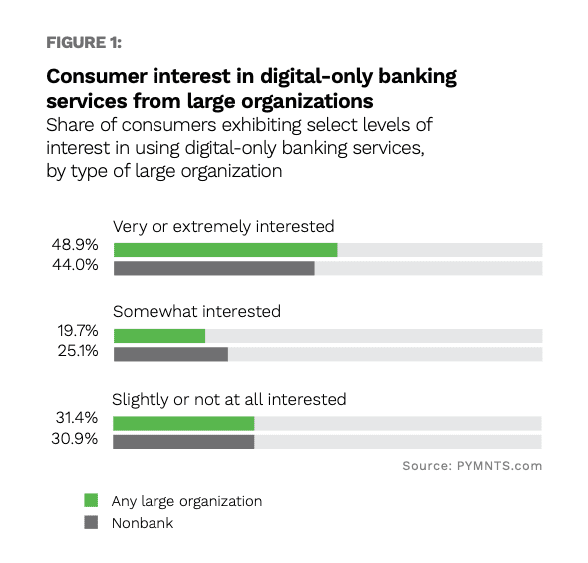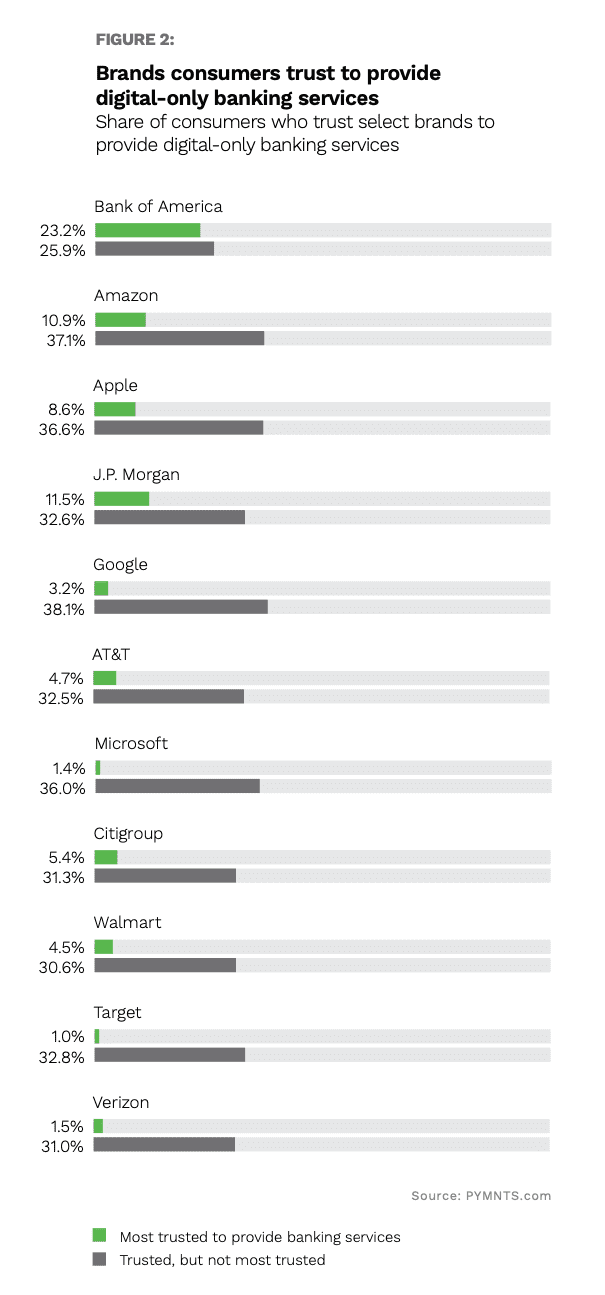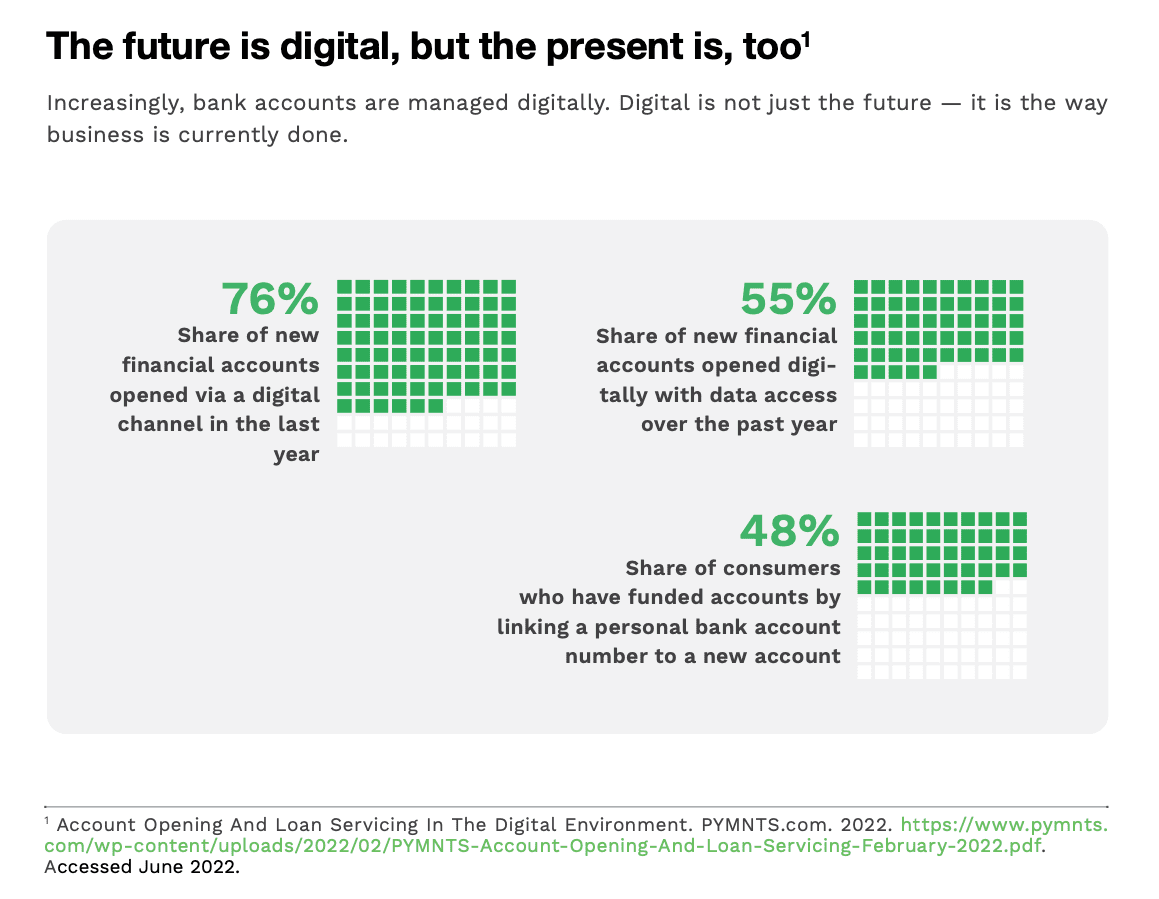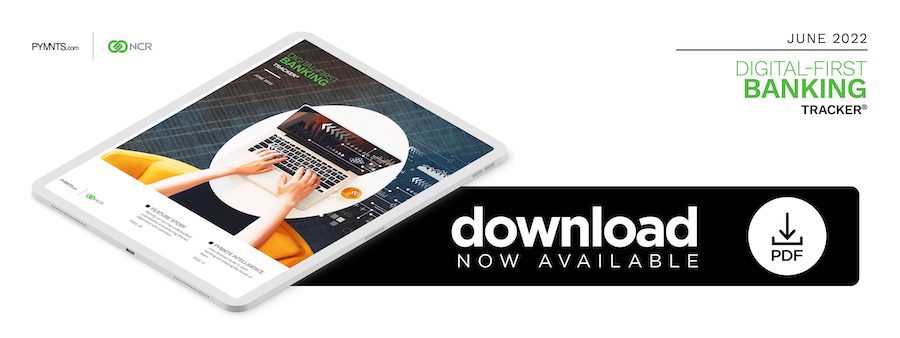The Data Point: Nearly 50% of Consumers Highly Interested in Digital-Only Banking
Branch banking didn’t vanish as many believed it might during the pandemic’s worst, but millions were introduced to digital banking, and a great many are using it, or intend to.
It’s not surprising given the dazzling functionality and sheer convenience digital banking delivers. In the June Digital-First Banking Tracker® produced in collaboration with NCR, we look at statistics from several studies and find digital banking gaining popularity as choice comes to banking in new forms with features tailored for how we bank in a post-pandemic world.
Banking-as-a-Service (BaaS) is gaining fast. Per the Tracker, “banking options have expanded, and consumers can decide whether they want to use a traditional retail bank, a credit union, an online-only bank or a neobank — and even some non-banks have increasingly entered the banking picture, offering services such as payments or savings that were the traditional purview of banks alone. This is where banking as a service (BaaS) comes into the picture.”
Get your copy: Digital-First Banking Tracker®

- 49% of consumers are “very” or “extremely” interested in digital-only banking services
Demand for BaaS is growing as consumer awareness and comfort with the concept increases. As developing these complex programs in-house is a challenge even for the largest financial institutions (FIs), white-label solutions offer an alternative to costly and time-consuming DIY initiatives at a time when consumers want BaaS now.
Per the Tracker, “Digital and online technologies have consistently increased competition and innovation across industries — a trend that suggests white-label banking is going to continue to grow in popularity. Interest in these products is strong, with PYMNTS’ research finding that 49% of consumers report being ‘very’ or ‘extremely’ interested in digital-only banking services from large organizations.”

- 45% to 49% of consumers trust Big Tech and banks most with digital-only banking
Banks and other FIs aren’t the only entities consumers will now trust with banking services, making white-label BaaS solutions of intense interest to other well-positioned players.
We found high levels of trust for companies including Amazon (48%) and Apple (45%) as nonbank organizations consumers would bank with, observing that “organizations that have backgrounds outside of banking have a sizable opportunity to gain ground within the banking industry if they can build on their strengths to make financial services fun, easy to use and secure.”
The Tracker adds, “These stats are very similar to the share of consumers who said they would trust major FIs: 49% said they would trust Bank of America to offer such services and 44% would trust JPMorgan Chase & Co.”

- 27% of U.S. consumers hold accounts with banks that maintain online-only presence
Over a quarter of U.S. consumers are already using an online-only nonbank to access BaaS and digital banking services, showing the appetite for these new banking experiences.
Per the Tracker, “27% of U.S. consumers hold accounts with banks that maintain online-only presences. Also known as direct banks, these branchless, digital alternatives to traditional brick-and-mortar establishments have been able to gain market share as more consumers shift their daily activities to digital and want 24/7 access. Checking and savings account holder satisfaction for direct banking remains high, with 88% of these customers saying it is easy to do business with their direct banks and 85% saying that they have not experienced hidden fees.”
See it now: Digital-First Banking Tracker®
